What has spaghetti got to do with human system design?
February, 2020“Our next big challenge is the true design of a human system – we can solve any problem, but what we need to do is consider the true value of what we are creating.”
Building a human future
Ever wondered what a human-first future might hold? Where technology is simply the enabler of the human experience. In my chat with Leanne Kemp recently, we talked through everything from horse-drawn carts to drones. From the Amazon basin to the time-space dimension and the flux capacitor.
It was a little like callisthenics for the brain. So much fun, a little hard (as my brain stretched to keep pace with the speed of Leanne’s thinking) but I felt really good afterwards and inspired to take action.
Wouldn’t it be awesome if we all felt like that when think about the future.
Simple solution – follow Leanne on her socials and go to any speaking gig you can get to! Follow Leanne on the channels you love.
Food for thought
1. Human first design
Technology is an extension of us. We must consider human design at the essence of technology.
2. Human skills are fundamental.
Skills that are in demand in a world that becomes completely automaised are understanding, collaboration, EQ and communication.
3. Value not just solutions are key
We don’t need to know how to build it – we need to understand how to use it and its value and how that value aligns to us.
Get the script!
Interviewee:
… a couple of things. I think this theory, that I’ve lived, and that is the technology 10, 20 years ago, was the checksum of humans.
Interviewer:
Okay, yeah.
Interviewee:
Right? So a simple example is my example of being in finance and accounting. I grab a spreadsheet, 35,000 lines to it, put a pivot table over the top of it and whoa, hang on a minute. Is that right? I grab the calculator and the calculator checked my technology, right? So now the opposite’s happening. We have autonomous cars and machine vision and so now the humans are becoming the checksums of technologies.
Interviewer:
Yeah, right. Okay. Yeah.
Interviewee:
So this way of being able to kind of reframe how we are interacting with technology and how technology is interacting with us. Technology and innovation is an extension of our thoughts and our mind, but actually, to a certain extent, if we don’t think about human design at the very essence of technology, then we start to spin out from what it means to be human.
Interviewer:
Yeah, right. So it’s big, scary kinds of possibilities. So-
Interviewee:
And then we get really scared, right? Because then we start shutting down autonomous language systems that are being created by automated chat bots like Facebook. They shut that down.
Interviewer:
So in your story are we kind of the calculator? We’re the tool that can be used to hold the technology more accountable, like the check in that story?
Interviewee:
Yeah. So I think, yeah, so originally when I was trying to add up numbers in my head, I used the spreadsheet to make sure that I was right. Now we’ve got technology running our world in various ways, autonomous systems or decision making or bots and now we’re saying, “Oh actually I don’t really necessarily trust that technology because it doesn’t feel right to me as a human.”
Interviewer:
Because it’s not normal.
Interviewee:
Because I’m not working, yeah, it’s not the way it’s working in the real world. So we’re placing technology in our world, so it’s-
Interviewer:
But when you … do you think it’s really challenging for … I sort of think about where’s the world heading? And if we don’t bring more people into the conversation, then it can go in a direction that’s probably not optimal. But then most people won’t join the conversation because they think it’s not about them or they’re not even engaged with the technology that you’re talking about, so they don’t know … how can even potentially, how can I even have an opinion on that?
Interviewee:
Well, you’re right, because the high skills that are in demand in a world that becomes completely autonomized is understanding, collaboration and communication. And that’s not necessarily skills that are native to technology. But with humans, we have to interact in such a way where we can start to inform how technology has a better understanding of us and vice versa.
Interviewer:
Yeah. So we need to understand it though, right?
Interviewee:
Yeah.
Interviewer:
And you’re talking about these kinds of skills-
Interviewee:
Well we need to understand how to use it.
Interviewer:
Yeah, right. Yeah.
Interviewee:
And the value that it brings to us and the values maybe that it aligns to us, right? So if I’m using cryptocurrency in a way to prolificate blood diamond trading in the world, for example, even Silk Road, that was built with cryptocurrency. The founder of that company innocently, he was not a party to the illegal activity on the platform, but he’s now in jail.
Interviewer:
Yeah. Wow. Okay. So there’s high risk.
Interviewee:
Yeah.
Interviewer:
Yeah. But when you talk about the skills that will be in demand, you’re talking about collaboration, you’re talking about understanding humans-
Interviewee:
Emotional intelligence.
Interviewer:
Emotional intelligence. So I kind of think, not everybody, but people have the innate skills that are required in the future, but people start to see that, because they don’t understand tech, then they’ve got no voice and no value in the conversation. So everyone that I have a conversation with, their sense is, well, I’ll be dead by the time that happens. I’m glad I won’t be part of that future.
Interviewee:
Yeah, because often people time lock skills, right? So they say, “I went to uni in this time, I learned accounting then.” They don’t see their skills as a … firstly, not many people have a pledge to lifelong learning, so it’s not necessarily within them and also, others aren’t willing to unlearn the mechanisms of how we transported ourselves through communities from horse and cart to now engines and now we’re talking about flying drones, human flying drones. We’re not willing to, to a certain extent, unlearn our preconceived ideas of what transport looks like.
Interviewer:
What is safe.
Interviewee:
What is safe and what is trustful and what is realistic.
Interviewer:
Yeah. But do you think then that we’ve, using the example of going from a cart to a car and then a car to a drone, is it that it’s moving so fast that people kind of have, they aren’t having time to catch up with the change so they’re getting left behind? Because we’ve gone through change, big changes before. Why is it that people are so resistant?
Interviewee:
Because we are so … are you on a record?
Interviewer:
Yeah, it’s already recording.
Interviewee:
Is it? Okay. We are so hyper-connected across the world right now and innovation is happening not necessarily in silos. We have experienced many innovations in our time and typically they come out in swim lanes, individualised streams. But science itself is being disrupted. The amount of startups that are created and within five years are billion dollar companies making trillion dollar impacts. There’s a certain metronome pace that’s increasing, not only in individual streams of technology, but the convergence of that technology. But what’s feeding this more than ever is our ability to create data, right? This digital language is now feeding this new sense of humanoids, right? Human merged technology. When we think about humanoids, we think about human robots, but that’s not necessarily the case. Humanoid type technologies are things that are merging the physical and digital worlds together and blurring that in a sense of augmented reality, virtual reality.
Interviewee:
These technologies are providing for digital twins, digital avatars in a seemingly digital world, but they’re also morphing us physically in and out of that space. Last night I was up at the Sunshine Coast with grade 10 students in a Catholic private school that were doing an innovation segment that they committed a whole semester to. And the kids that were there were absolutely amazing, but I sat in … the DeLorean project is what they called it, it was Back to the Future. One of those DeLorean cars came and we had to get to 88 miles an hour and then run through the speed of sound and light to travel ahead in time, or backwards in time with the flux capacitor.
Interviewer:
That’s awesome.
Interviewee:
Yeah. And there was something so increasingly real and human about that. The mad professor that was there was the backyard innovator that honestly was putting together the principles of physics to say, “We can do this,” or, “We can do this in a way.” And the connectedness of that technology for him to the story of his life.
Interviewee:
So I do wonder about if there is an opportunity to rethink your time and space dimension when you are able to truly see it from the point of view of where and how with the consciousness you would have enabled technology. I remember delivering a keynote speech as a TEDx talk and it was about Blockchain with time and space. I remembered the words of Albert Einstein, that time and space is a mode in which we think, not necessarily modes in which we act. If we think about the Hubble Space Telescope, for the first time in human history we were able to look back upon ourself or back upon the planet with the most enabled and boundless opportunities. We saw Earth for the very first time that was not encased within geographical boundaries. And when we look back upon that, something so incredibly large being able to fit into the optic nerve, which is so intensely small. And we then think about the boundaries we put on ourselves and civilization.
Interviewer:
The boxes we put ourselves in.
Interviewee:
Well even think about this, contemplate the number of tribes that sit in the Amazon basin and yet we’ve put country geographical lines in place here. 44% of Australia is indigenous lands that stretch across fence lines, that are now owned in cadastral mapping because we decided that’s where the line went, or that’s the line that separates Queensland and New South Wales. So at what point in time did we lose the human connectedness with the communities and with our indigenous roots and decide that technology, cadastral mapping technology, drew this line?
Interviewer:
And how arbitrary it is.
Interviewee:
And now we’re unravelling that cooked spaghetti. It’s cooked spaghetti, we’re unravelling it. And some is sticking to the walls.
Interviewer:
Oh, I love that analogy. And it’s getting a bit gloopy potentially and not palatable. Maybe we need a whole new bowl of spaghetti to start from scratch.
Interviewee:
Yeah, or to make it taste a bit nicer we just lump some meatballs.
Interviewer:
And some sauce, we need a jar of spaghetti sauce. I think, Leanne, your point around, you sat with a young group, I was lucky enough to be on the Tech Girls are Superheroes as a mentor of the winning group, right? And my perspective as a 45 year old woman, I’m sitting there with them and their potential and their capacity to understand the value of each other and then work out how to collaborate to build a solution, I just, my only job was to sit there and cheer them on. Because if they needed to work out how to build a survey, they could Google it. If they needed to work out how to write a business plan, they can fucking Google it. The whole group of them, their view of what is possible was boundless.
Interviewer:
And potentially our job is to not put them in a fucking box, to stop the box from being created because they’ve already got the capacity to make a whole new bowl of spaghetti, right? It’s just potentially our generation, I’m sort of throwing you in the mix there, but we’re so used to being in a box that then when someone says, “Hang on, why don’t we look at this thing over here?” There’s a fear around that, right? Where you’re saying-
Interviewee:
Yeah, but it’s not the fear of thought. I think it’s the fear of knowing the how, the beginnings of the delivery. And I think it is interesting when you think about it, the emotional intelligence that’s needed to collaborate and coordinate is where we’re missing the beats, right? I think we can collaborate well and we continue to, because it’s the very essence of who we are in tribal and village natures. But our coordination efforts are super poor, we don’t coordinate well across the state of Queensland when it comes to innovation. We collaborate incredibly well, we can collaborate, but there’s a difference between coordination and collaboration.
Interviewee:
Technology plays a great role in coordination. Technologies like Blockchain help to coordinate business networks in ways and synthesise against the value and the values of that industry or those participants on a network. And if you think about the true design of any technology or human system, it should be about what is the value? Yes, we are solving a problem, but what is the value being created through this problem solving mechanism? And the most delightful part about innovation is not necessarily solving the problem, it’s how value is created through unintended consequences.
Interviewer:
Wow. Which there’s a lot of, you’ve got to be willing to let go, right?
Interviewee:
Unlearn.
Interviewer:
Oh my God. And I think that you talking about what’s the value we’re going to create, it’s also when there’s a collaborative group, they’ve got to let go of their own value and look at how we are going to throw it all together, right? And so there’s a certain level of having to remove one’s ego and say, “Well what’s that pool of value in the centre that we’re going to actually create together?” And there’s a resistance to-
Interviewee:
We closely look at box timing our skills or box timing our contribution and some of that is even being provided for in the way we govern boards and directors and CEOs. Because if we think about the collective patchwork quilt of lived experience that I have, wearing my shoes, belt and hat in terms of the World Economic Forum, chief entrepreneur and the founder and CEO of Everledger, for me the contributions that I can make and see and build upon, just in the way upon which I contribute to thinking, is the piece that most people are scared to embark upon. Because the currency, in terms of lived experience and skills and time and the collective nature of that, if coordinated well can absolutely sky rocket us into a whole other dimension of thought and realisation.
Interviewer:
Oh my God, it’s like this whole kind of … my brain feels like it’s stretching. But it is like this, I have this thing around this idea of an individual’s value. By looking at someone and just saying, “You’re the chief entrepreneur,” or, “You’re just a CEO.” People are so anchored in this idea that I am a CEO, but don’t look at the layers of value that you built up over … if it’s 10 years or 50 years or 80 years even, there’s an immense amount of value that’s built up. So if we’re limited just to the fact that you’re the chief entrepreneur, then that’s just one layer of value we’re accessing. But if we can enable people to access all of their value and bring that to the table on a global scale, imagine what we could fucking solve.
Interviewee:
We should all look at our skill as a currency.
Interviewer:
Yeah, oh God.
Interviewee:
It has the ability to synthesise value in so many different ways and even can be translated internationally in various different foreign exchanges as well, right? So think about my skill as an engineer and my skill as a female founder, that’s a skill in it’s own right.
Interviewer:
It is, to learn to navigate that process.
Interviewee:
Yeah. And the currency of that skill has an importance in terms of time space dimension as well.
Interviewer:
Yeah. So how do people do that though? When you’ve got a world that kind of assigns value by a limited layer. Most businesses do still define their, even their staff’s value by a limited layer. And then if you then go on and look at age, suddenly that layer decreases. So how do we disrupt that and start getting businesses to really look at the collective value that they’ve got available to them? Because I think if they did that, they could actually solve some of their own problems.
Interviewee:
Yeah, we should be … the structure of Everledger is quite outstanding in the way that we think, because we think about our structure not in a hierarchical form, even though we place a hierarchy or org chart on the wall, because most of us only ever are taught that’s what a work structure looks like. But we actually form and reform teams around a Rubik’s cube type environment. The colour of the face of our Blockchain engineers versus our DevOps versus our commercial team could be green, red and yellow, but to achieve an outcome of an incredible product build or an engagement with a commercial company of ours, a customer, it takes actually a scrambled Rubik’s cube to enable that to work very well. And you need to be able to have leadership in a way that might need to reform that Rubik’s cube but still keeping it in a tight dimensional space.
Interviewer:
I like that. But do you think that the businesses now, because I work with businesses now that are trying to look at how we can solve some big problems, I worry that if they don’t shift really quickly, they’re running a risk of not existing for much longer. So how do you start to then disrupt their thinking around how you assign value to your people within your own organisation? What would you do to take them from traditional to a new way of operating?
Interviewee:
It’s systems leadership. And when we think about the likelihood of a well formed CEO that’s had a 20 year tenure to enable that change, it’s not likely to come from that leader, unless that leader completely extracts himself to take the Hubble Space Telescope view of the world. Even then he’s been so trained, it’s ingrained to protect the profit people and the product that has been built over the better part of the last 20 years. It’s got to come from assistance leadership and innovation thinking, the frozen middle within the organisation, those that have had in situ knowledge running. The role of really true leaders have got to enable a framework of risk. You talk about being comfortable with failure, but to enable a framework of risk. So we need a great big keto diet to go through the frozen middle of management.
Interviewer:
Do you think that’s where the opportunity is? In the frozen middle?
Interviewee:
Most definitely. Most definitely.
Interviewer:
Do you?
Interviewee:
Think about it, think about unlocking that. But even then, look at the permafrost layer that sits across our world, right? We’re just hitting this now unashamedly because of our climate change concerns, but what’s hidden within the permafrost layer is absolutely fascinating to me that could be born out.
Interviewer:
Wow. So you see potential.
Interviewee:
Yes.
Interviewer:
You see massive potential. Whereas when I see organisations, I often see that the top player are in isolation having conversations. Often they’re reinforcing their own limiting beliefs. And my job, all I get to do is see all the layers, so the frozen middle, but also the dungeon. I get to go and have conversations in the dungeon and, almost without fail, the energy and the change and the solution sits in the dungeon.
Interviewee:
Totally.
Interviewer:
There’s just no fucking conversation between the dungeon and the penthouse.
Interviewee:
Correct.
Interviewer:
And the number of times I’ve seen boards flying around in their private jets and then the penthouses having conversations with the board, talking about some idea and the solution in the dungeon has already been considered and even potentially built. There’s just no enablement to bring that conversation to the top, if you use that analogy.
Interviewee:
Because the dungeon and the frozen middle are most connected to the customer.
Interviewer:
Yeah, that’s right. Yeah, yeah.
Interviewee:
So it should really be flipped on its head. We often look to the CEO or the board to help with, particularly the CEO, to help with the vision across the better part of the next 20 years, or set the temperature of culture and what have you, but it’s all being baked in by the behaviours within the organisation. If you’re able to actually permission out and give them the right to just ask for forgiveness.
Interviewer:
Yeah, that’s right. Yeah. Yeah.
Interviewee:
Right? Then all of a sudden actually the board and the CEOs are keeping it within the larger remit, rather than being the one trying to row the boat at the same time and come up with a whole new horizon strategy. But we need to be able to really run deeply within human factors and the ergonomics of who we are and you translate that into rigid systems. There’s no secrets to that right now.
Interviewer:
As in no secret solution, no easy solution?
Interviewee:
No easy solution.
Interviewer:
Yeah. But I still kind of think it comes back to human skills. If you open the conversation to a broader group of people, diverse group of people within an organisation, have open, honest, brave, courageous conversations around what’s that elephant in the room that we’re all ignoring? Because that’s always, that ends up being the problem we can solve. And if we can have brave conversations around that, that then at least helps us define the elephant, rather than jumping to the technology that will solve the thing that we haven’t defined yet. And that could maybe be the first easy step if businesses started to have that broader conversation.
Interviewee:
I think so.
Interviewer:
Or is that too simple?
Interviewee:
I mean we’re human, so everything we do is deeply complicated and it has the shade and the light and the darkness.
Interviewer:
And pain and fear and yeah.
Interviewee:
But sometimes we’re not very well positioned around the butterfly effect and the butterfly effect in a number of ways. If you have a pebble effect that’s in Australia, it ends up causing unintended consequences in another part of a system. But I think about the butterfly effect in a different way where you literally have people, sometimes cocoons, right? You put them into a space, into a new role and they close in. And then you crack the shell over time and there’s a little bit of light and some people are like, “Yeah, I want the light.” And they jump straight out and smack on the table, they’ve not grown wings.
Interviewer:
That’s a beautiful analogy. So they’ve got to be ready to crack out of the cocoon. But often in those conversations you can see the people that are ready and if that conversation leads to enabling those that are ready to start the process, then at least they’re on the journey, right? As opposed to-
Interviewee:
The reason why I think it’s very broken in organisations is we still run into what is my job? What is my role? What is my KPIs?
Interviewer:
Yeah, what’s my box? Yeah.
Interviewee:
But in our environment, as entrepreneurs, startups and founders, we look for who’s the hustler? Who’s the hunter? And we bring those teams together. Even though my functional role will be to do certain tasks on a day-to-day basis, I’m a hunter gatherer. And who in the organisation is a hustler?
Interviewer:
Which is sales, right?
Interviewee:
Yeah.
Interviewer:
Yeah. And the hunter is-
Interviewee:
And who’s the hipster? A hipster is someone who’s-
Interviewer:
The data?
Interviewee:
No, a hipster is someone who’s a designer.
Interviewer:
Design. Yeah.
Interviewee:
A creator.
Interviewer:
What about data? Who’s the data-
Interviewee:
Well I don’t know about data.
Interviewer:
So the hustler, the hunter and the hipster.
Interviewee:
Probably the Viking is the data.
Interviewer:
So where do you think there’s the human skillset? I tend to, maybe I’m naive, but I feel a growing need for the person who gets the human, the customer. As in gets who that customer is and understands their pain, understands their desires and that’s still a very human thing. There’s no tech in that yet. So where does that person fit in that mix? I’m asking for myself.
Interviewee:
That’s every single one of them.
Interviewer:
So they all have to have those skills?
Interviewee:
They all have to have human centric design, the pains, the gains, the jobs to be done. How do you deeply look at what is the value I’m creating? What is the problem I’m solving? And actually who are the personas? Because I might be solving a problem for this particular type of persona, but-
Interviewer:
Causing a problem for the other one.
Interviewee:
Yeah. That is a completely disconnected way of interacting. And then you start thinking of the overlap of technology when we’re now sitting here with a keyboard. And there was a time where we would all have mice connected to-
Interviewer:
Mice, meese.
Interviewee:
Meese. Mouses.
Interviewer:
I’m conscious of your time-
Interviewee:
Connected to laptops, but now we’re moving to the voice is the new user experience and so too the camera is the new eyes of our computing. So how do we view that in terms of the human? I don’t hardly ever-
Interviewer:
It’s a different human experience, right? It’s a different layer of that.
Interviewee:
I never type on my iPhone. It actually gives me so much more flexibility. Everything I just speak to and it automatically goes speech to text on everything that I do.
Interviewer:
Yeah. So it’s a different layer. But I guess my … and I ask this because as a mother and also as a human who’s looking at my own career, I look at those people that you’ve mentioned, the hustler, the hunter, the hipster and the Viking, the people that I see now, they don’t have necessarily high levels of skill in the human side of things. Just the people that I see. That seems to be a skill all of its own. And it seems to be one that most humans who are not in that box can still own. And whenever I work in that tech space, they don’t get humans very well. So are you seeing a different breed of the hunter, the hustler, the hipster and the Viking who have that amazing skillset? Because they’re younger as well, generally.
Interviewee:
I think there’s a correlation between those that are deeply entrenched within technology and the disconnection they have with the human system. And arguably you’d say there’s probably a correlation with mental illness there, right?
Interviewer:
Yeah, absolutely.
Interviewee:
Depression and how do you be the one that … we yearn so deeply just in the animal spirits that we all have, but we’ve lost the connection with exactly that.
Interviewer:
Yeah, absolutely.
Interviewee:
Through this stupid toy, do you know what I mean?
Interviewer:
Yeah, the stupid things and the fucking voice-
Interviewee:
This thing that rings and beeps and bonks at me.
Interviewer:
And annoys me. So coming back to that though, it seems my feeling is that we’re pulling away and getting back to what it is to be truly human. Because this has kind of almost gone hell for leather as a tech in isolation kind of thing and it’s causing problems. Now we’re bringing the human qualities back into the conversation and it’s becoming more dominant, in my view. I’d love to hear your view.
Interviewee:
As technology starts to become self-taught, self-learned, understands it’s languages, can actually get to a point of autonomy, we will amplify the best of who we are as humans and enable us in terms of our artistic flare, our thinking process, our storytelling, all of those things and to allow the technology to do the do, whilst we do the design.
Interviewer:
Yeah. Amazing. That’s a great note to close on. That makes the future sound really exciting actually.
Interviewee:
It is exciting.
Interviewer:
I like it, it’s good.
Interviewee:
Because we’ve created the future.
Interviewer:
And we can determine a different future if we want to, right? If more people join the conversation, it could then be a different … it’s like a choose your own adventure.
Interviewee:
It is. A Nancy Drew mystery.
Interviewer:
It’s like we’re going back to … will anyone really know that reference? I know that reference.
Interviewee:
Except this version of a Nancy Drew mystery would probably have a few robots, flying drones and maybe a Blockchain or two chucked in there along the way.
Interviewer:
Yeah, that’s right. I love that.
Interviewee:
Thanks for a good old chat.
Interviewer:
Thank you. And thanks for joining me. It was fun.
Interviewee:
Happy days. See you later.
Interviewer:
Oh God. It’s like you’ve just stretched …
Recent posts
Sharing stories on everything from digital, marketing, customer experience, brands and digital transformation.
“How to coherently present my brand online across the platforms?”
“How to coherently present my brand online across the platforms?”0 Comments A brand is the manifestation of your value as a business and as a leader. And that value includes your offer and your brand values. Be of service to the market. What can you...
Digital (or technology) is not for me. Full stop!
DIGITAL & MARKETINGDigital (or technology) is not for me. Full stop!Jane Peacock, Chief Digital Fear Slayer March 2016This was me not too long ago, and in conversations with business leaders, it appears I am not the only one. This has prompted me to share my...
Why is digital hard?
DIGITAL & MARKETINGWhy is 'Digital' hard?Jane Peacock, Chief Digital Fear Slayer March 2016It promises so much 'good stuff', right? But the implementation of all of that good stuff is where it gets hard? Ideas and theories are easy. When humans get involved, it...
“Stop, collaborate & listen”
DIGITAL & MARKETING“Stop, collaborate & listen”Jane Peacock, Chief Digital Fear Slayer March 2016We all know that digital brought about opportunities to merge these two disciplines as the customer journey becomes more integrated from awareness and engagement...

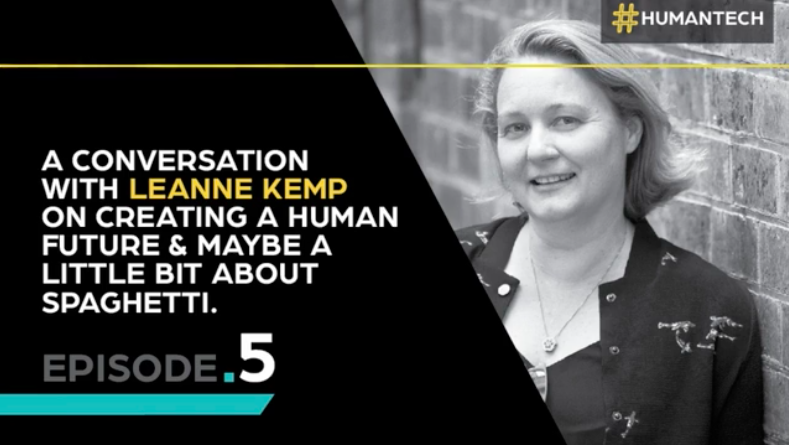
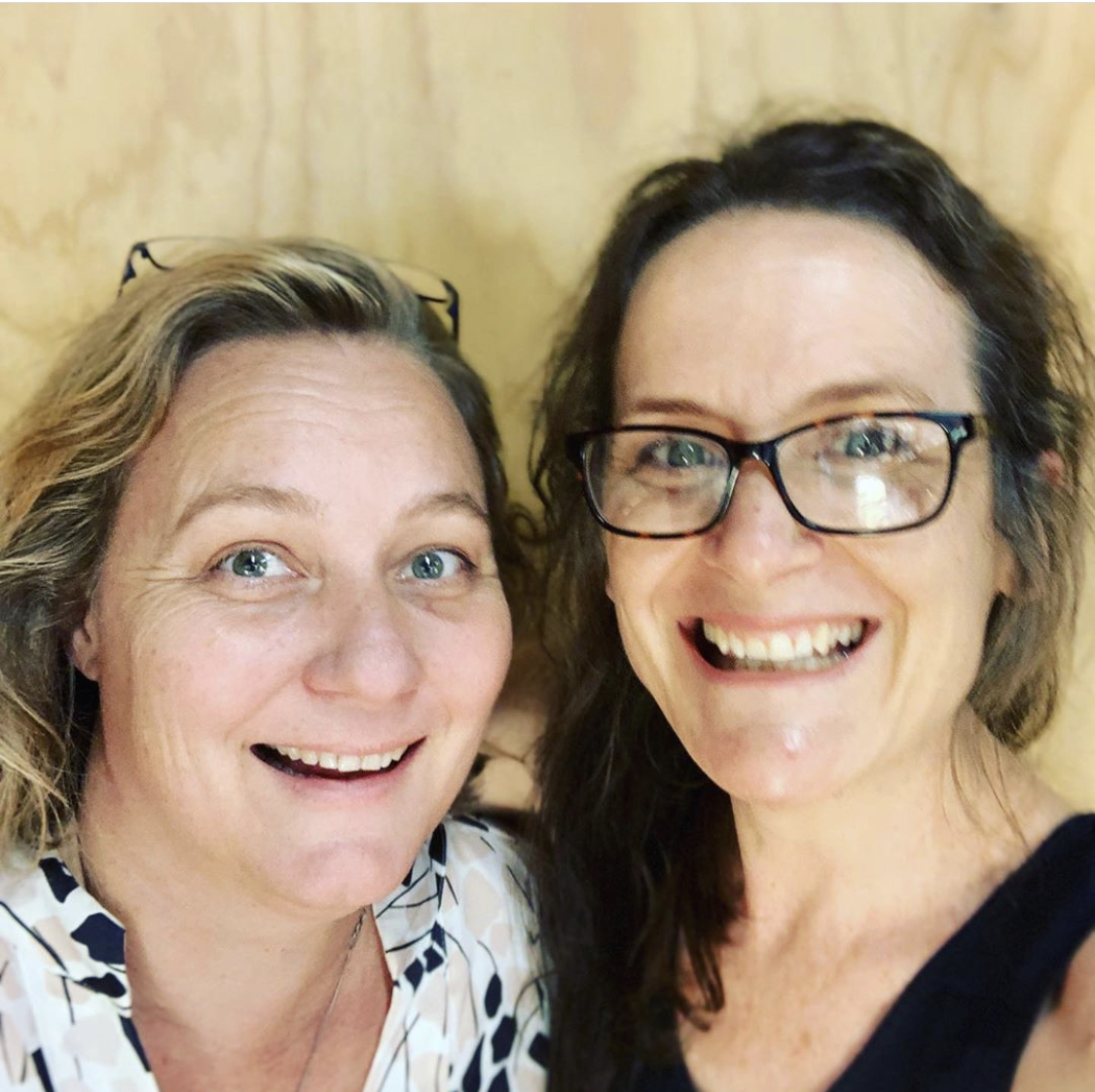
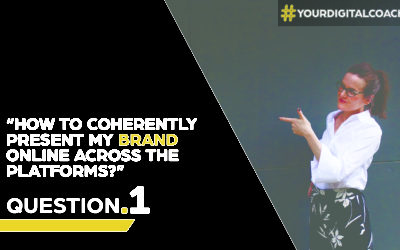
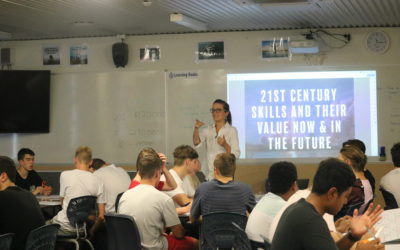
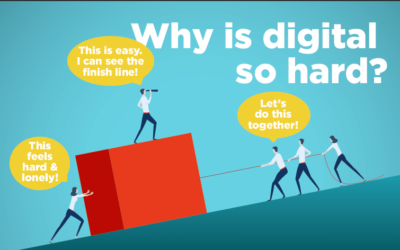
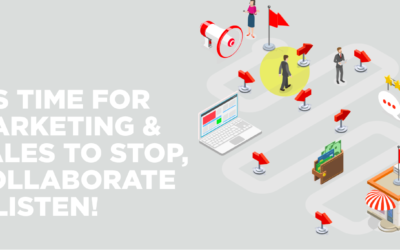
Recent Comments